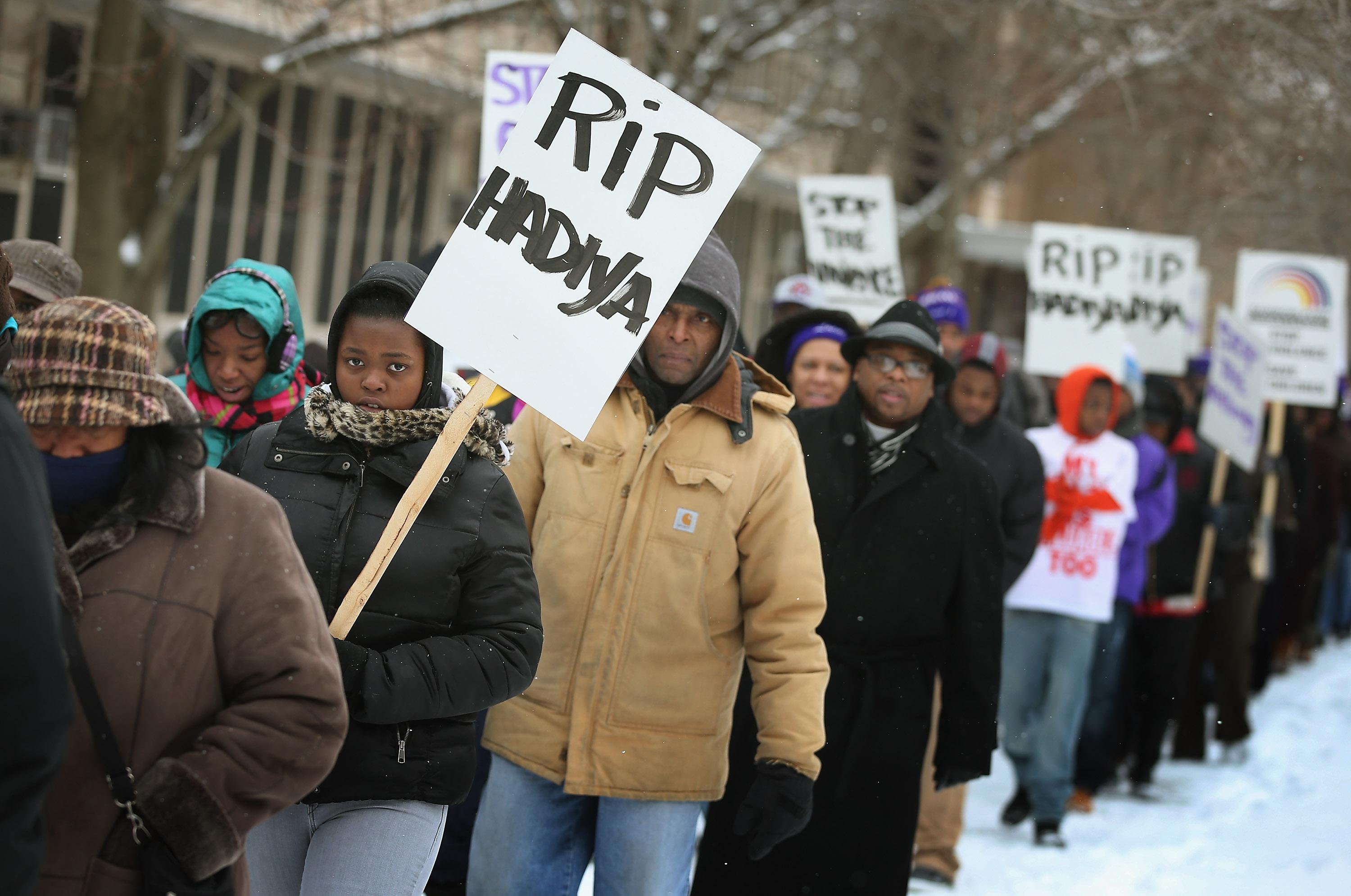The NRA and its like-minded allies have talked about putting armed guards in schools to prevent school shootings like the one we saw in Newtown. But when it comes to dealing with the aftermath of violence—be it a mass shooting in the classroom or gang-related violence off-campus—some schools are looking to another organization with its own expertise in guns: the military. Could the military’s methods actually do some good in America’s schools?
That’s one of the questions asked by a new two-part This American Life series that began airing Friday evening. The show is definitely worth a listen. One specific part that jumped out is a segment about how one Chicago public school in particular—West Englewood’s Harper High School, which has seen 29 current and recent students shot and eight killed in the past year alone—is grappling with gun violence.
Three years ago, Harper administrators started using a system called After Action Review, or AAR, to respond to violent incidents involving their students. TAL chronicles the school’s response after a former student gets shot outside of a gas station. The day after the shooting, Harper’s principal convened the AAR group, which consists of about two-dozen people all together, ranging from social workers to the school’s football coach. Such meetings serve as something of a debriefing during which the school pieces together the information they have about the incident: What happened? Who was involved? The group’s main purpose is reactionary, but it’s a start. If you listen to the episode, you can start to comprehend what a daunting task it must be to combat gun violence as a community-wide epidemic.
So where did the school get this idea from? That’s right, the military. Here’s the relevant snippet from tonight’s transcript:
A couple years ago Chicago Public School officials were visiting Fort Leavenworth in Kansas to research military training tools—tools they might use to prepare people working in the city’s roughest schools. They came across the AAR, the Army’s tool for analyzing events, for assessing damage, compiling information, and trying to figure out how to respond. …
A district administrator told me, think about it: the natural response for a school after a shooting is to go into panic, and to grieve and to hope that it never happens again. That’s normal. And so when the Chicago Schools first brought the AAR in from Fort Leavenworth, and suggested it to Harper some people said it felt wrong. Like they’d be planning for students to be shot. But the staff at Harper knew it would be better to have procedures and a plan to contain the damage. That’s the AAR.
You can listen to the first episode here.
